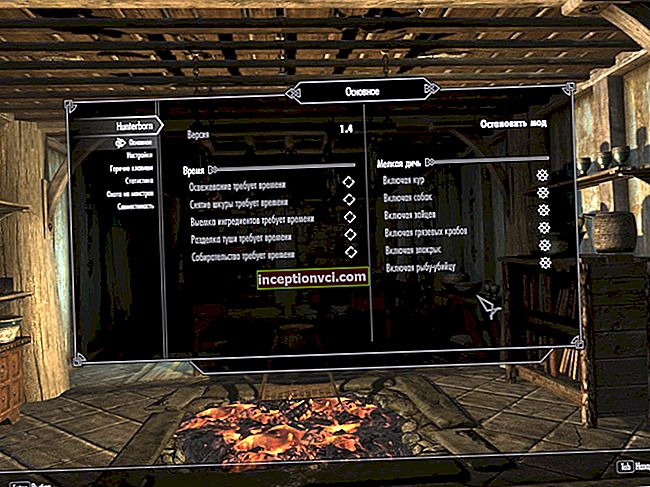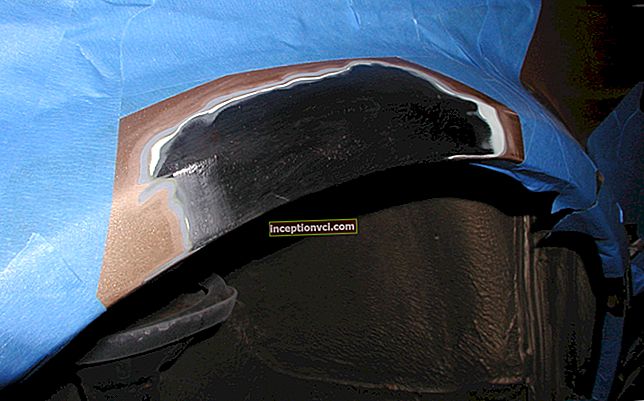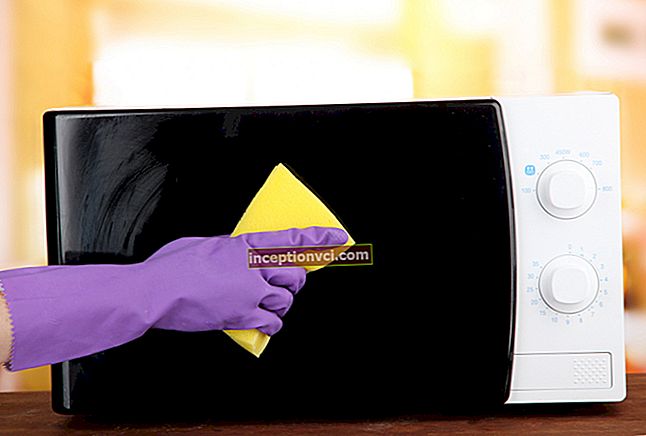The basis of a modern kitchen is a triangle - a refrigerator, a sink and a stove.
Cookers are divided into three groups according to the heating method:
- electrical;
- gas;
- combined.
 There are several types:
There are several types:
- separately
- standing;
- built-in.
Built-in cookers are divided into two parts:
- hob;
- oven.
Which stove is better, how to choose the right one are the main questions in finding a household appliance for comfortable and economical use.
What are the stoves
Cookers differ:
- gas stoves with gas ovens;
- gas stoves with electric ovens;
- electric stoves with an electric oven and cast iron burners;
- electric cookers with a glass ceramic surface;
- combined stoves with gas and electric burners and ovens;
- induction cookers.
Consider the possibility of connecting the stove in your apartment to a heating source when choosing a specific type of household appliance.
Gas stove - types of gas stoves
The types of gas stoves depend on the gas used.
Distinguish:
- natural gas stoves;
- stoves that consume liquefied gas (from cylinders).
The main part of the appliance consists of a hob, on which there are 2 to 6 burners, with or without an oven. The surface and details of the slab (except for the back surface) are enamelled in various colors or made of stainless steel. The height of the gas stoves is 85 cm (according to the standard height of the kitchen worktop), the width is 50-90 cm, the depth is from 50 to 60 cm. The burners ensure uniform heating of the oven to a temperature of 285-300 ° C in no more than 25 minutes.

Benefits:
- fast ignition;
- the ability to use many types of dishes;
- cheaper than electric ones by 10-20% (if we compare plates of the same class and manufacturer);
- convenient to cook food and adjust the temperature;
- the cooking speed takes less time, since the temperature of the open flame is higher than the temperature of the electric heating element.
Disadvantages:
- when burning, it burns oxygen, emitting carbon dioxide;
- gas explosion hazard;
- in ovens the temperature is poorly regulated, it is impossible to set the exact temperature;
- Smoke on objects located close to the burners due to impurities of the gas used.
A gas stove is more economical than an electric one, since electricity consumption costs the user more than gas. The requirements for the quality of electrical wiring in the house are strict and uncompromising. Additional functions for gas stoves provide comfort and safety in use: models are available equipped with the functions of gas control of the oven, electric, auto-ignition of the oven and surface, with self-cleaning oven covers and several types of heating.
Article on the topic: "How to clean the oven from fat and carbon deposits"
Comments of the head of the sales department of the online store "Fotos" Irina Vazheva: "In the online store" Fotos "gas stoves Nord, Gorenje, Greta, Indesit, Ergo are in great demand among customers, which make up 20% of the total sales of kitchen stoves."
Electric stove - pros and cons
Electric cookers consist of:
- hob;
- oven.
The hob determines the type of electric stove:
- classic (conventional) electric stoves;
- glass-ceramic;
- induction.

Electric stoves are divided into:
- floor;
- desktop;
- built-in.
Classic (conventional) electric stove
The surface material of electric cookers differs as:
- enamel can be of different colors, not expensive in cost, easy to wash;
- glass ceramic has a stylish design, easy to clean. But the glass gets scratched and cracked when liquid hits the surface. Demanding on dishes;
- stainless steel is more expensive than enamel coating. Aluminum alloy does not tarnish, does not scratch and maintenance is minimal.
Classic electric cookers take longer to cook than gas cookers because the burners heat up (and cool down) a certain amount of time (depending on the model). Equipped with a temperature regulator and a time switch for setting the cooking time.
Types of electric cookers:
- open spiral or heating element;
- cast iron burners;
- glass ceramics;
- induction.
Electric stove control method:
- electromechanical;
- electronic;
- mechanical.

Benefits:
- convenient oven with a variety of additional functions, it is easy to cook in it;
- safe to operate when properly installed;
- does not form carbon deposits and soot.
Disadvantages:
- are more expensive than gas stoves;
- dependence on electricity.
Electric stoves: burners
Electric stoves have a different number and arrangement of burners, which differ in size and shape. For quick heating, the diameter of the bottom of the pan must match the size of the hotplate and be even. There are 4-7 levels of heating regulation:
- medium power burner (cast iron) is heated up to 10 minutes;
- the quick heat-up burner heats up in 6-7 minutes at maximum power;
- powerful burners (often in glass-ceramic and enamel-coated plates) stand out on the surface with a red spot or dotted lines, heat up in 1 minute;
- the auxiliary burners change the heating zone. The heating area of different diameters is regulated by pressing a button or turning the knob;
- on the round / oval zone of the burner expansion, dishes are prepared in specific dishes (for example, a rooster);
- induction hobs regulate the heat precisely. During the cooking process, the bottom of the cookware heats up, while the cooking zones remain cold. Ideal for cast iron, steel and enamel cookware.
Irina Vazheva, the head of the sales department of the Fotos online store, comments: “The top brands of sales in the Fotos online store among electric stoves are Gorenje, accounting for 35% of sales, Hansa - 20%, Beko - 15%, Electrolux - 10%”.
Glass ceramic (ceramic) plate: pros and cons
Glass ceramic hobs have advantages over traditional cookers. They have a higher thermal conductivity and easily adjustable temperature than conventional electric stoves. They have a mirrored, flat and smooth surface with marked burners. The cooking speed is comparable to that of gas stoves (they are heated to a predetermined temperature in 10-12 seconds). The cookers are equipped with a number of additional functions that make cooking a pleasure. Safe to use.

Benefits:
- easy to clean as the surface is flat and even;
- burners do not wear out;
- stylish design against the background of the kitchen interior;
- heating elements heat up / cool down faster than electric stoves. Boil two liters of water in 2-3 minutes;
- the possibility of burns is excluded.
disadvantages:
- cook food only in utensils made of cast iron and enamel. Containers made of copper, aluminum, glass, stainless steel, porcelain, ceramics, brass are not suitable for this type of plate;
- washable with special compounds;
- the surface is easily scratched and loses its properties;
- glass ceramics are susceptible to damage: they can withstand a lot of weight, but are destroyed by a point impact with a sharp object. Microcracks are formed from splashing water onto a heated surface. Remains non-washable stains from sugar, plastic, aluminum, etc.;
- are more expensive than electric stoves.
How to care for your glass ceramic hob
Use a scraper to remove food debris from the surface of the stove.Burnt sugar grains and remnants of aluminum foil, as well as molten plastic, are removed from the warm surface by easily scraping off with a scraper. Allow the hob to cool and apply the glass ceramic cleaner, rubbing in a circular motion with a microfiber cloth. Clean with a damp towel and wipe dry.
Consider the following points when caring for your glass ceramic hob:
- do not wipe the surface of the ceramic hob with a dishwashing sponge. Traces of grease or detergent discolor the surface when the hob is turned on;
- grease splashes, plaque and stains are removed with special ceramic care products. They are applied to the cooled surface and must be removed after cleaning - thereby preventing chemical damage to the surface of the plate;
- plaque is removed with a weak vinegar solution;
- dishwashing detergents leave blue stains on the surface of the glass-ceramic hob. It is difficult (and not always) to be displayed with special formulations;
- Do not clean the surface with stain removers and oven sprays.

Glass ceramic hob care: home remedies
Use:
- baking soda: a slurry of wet baking soda powder is applied to the surface of the stove and dirt is removed with a damp sponge;
- vegetable oil: to create a protective film, after washing the plate, the surface is wiped with a soft cloth moistened with a small amount of vegetable oil;
- the razor equally replaces the scraper.
How to choose an induction hob
Induction hobs (surfaces) are:
- small portable with one burner (tabletop);
- built into kitchen furniture;
- combined: some of the burners are induction, some are powered by heating elements.
Advantages and differences of an induction cooker from glass-ceramic, electric and gas:
- fast (unlike stoves with heating elements) and convenient (comparable to gas stoves) heating of the burner;
- coefficient of performance (efficiency) - 90% (for information, the efficiency of electric stoves - 60-70%, gas - 30-60%);
- the burner turns on only if there are dishes with a magnetic bottom on its surface;
- when removing the dishes from the surface, the stove turns off automatically (for electric stoves, the burner heats up regardless of whether there are dishes on it or not. Thus, electricity is wasted, the air in the kitchen heats up;
- precisely maintains the set temperature of the container, in contrast to the gas flame and the resistance heater of the electric stove;
- do not depend on the power of the voltage in the network (unlike classic electric stoves);
- the surface heats up / cools down quickly in the presence / absence of dishes on the stove;
- there are a large number of additional functions;
- easily cleared of dirt.
disadvantages:
- only certain types of dishes are used;
- when several burners are working at the same time, they do not heat up at full power;
- heavy load on electrical wires;
- electromagnetic radiation from the oven to the devices.
How an induction cooker works
An induction cooker heats metal cookware with eddy currents, which create high-frequency magnetic fields with a frequency of 20-100 kHz. Power is regulated in two ways:
- continuously;
- impulsively - turns on and off once every few seconds.
At maximum power, the stove operates at a frequency of 50-100 kHz, with a decrease in power, the frequency decreases. At a frequency of 20 kHz, the hotplate operates in intermittent heating mode.
Induction hob heating zones
A feature of these plates is the cold surface around the heating zones, which minimizes scalding during cooking. Equipped with different types of heating element:
- spiral heaters - the spiral heats up quickly (in 15 seconds);
- tape heaters - made in the form of a tape, twisted in the form of a spring, as in a mechanical watch. Heats up within 8 seconds;
- halogen heaters - a tube filled with halogen gas in which a heater is built. The current flowing through the heater emits halogen gas, which heats the cookware. Heating occurs instantly after switching on. Works at full power after 3 seconds;
- induction heaters create a powerful high frequency magnetic field that heats the bottom of the cookware.

How to cook on an induction hob
Cooking on an induction hob is only possible with suitable cookware, which can be checked with a magnet. Such plates automatically recognize dishes with a magnetic bottom and switch to working mode.
Used by:
- enameled dishes with a flat bottom;
- stainless steel dishes;
- cast iron cookware.

If the bottom of the cookware has a layer of metal (for example, steel), which is not separated from the burner by anything other than enamel, the cookware is suitable for cooking on an induction hob. The magnetic field does not penetrate above the thickness of the bottom of the container.
Combined cookers
The combination hob combines a gas and an electric hob and has an electric or gas oven. It is convenient to cook food in any situation: whether the gas supply or electricity is turned off.
There are 2-3 gas burners on the hob, 1-2 electric ones. This type of cooker in some models is equipped with a timer and an electronic display (for ovens).
Free-standing slabs have standard dimensions: height - 85 cm, width and depth from 50 to 90 cm and from 50 to 60.5 cm.
Irina Vazheva, the head of the sales department of the online store "Fotos": “Popular among the combined plates is the sale of Gorenje models in the online store“ Fotos ”, which makes up 50% of the sales of combined plates. Beko - 20%, Liberty - 15%, Hansa - 7% ”. Each type of cooker has its own advantages and disadvantages.

In the electronic catalog of our store there is a large selection of kitchen stoves. Order the product right now. Tomorrow we will deliver the purchase at a convenient time for you.
Choose the best cooker!
See an overview of the Kaiser combination boards









